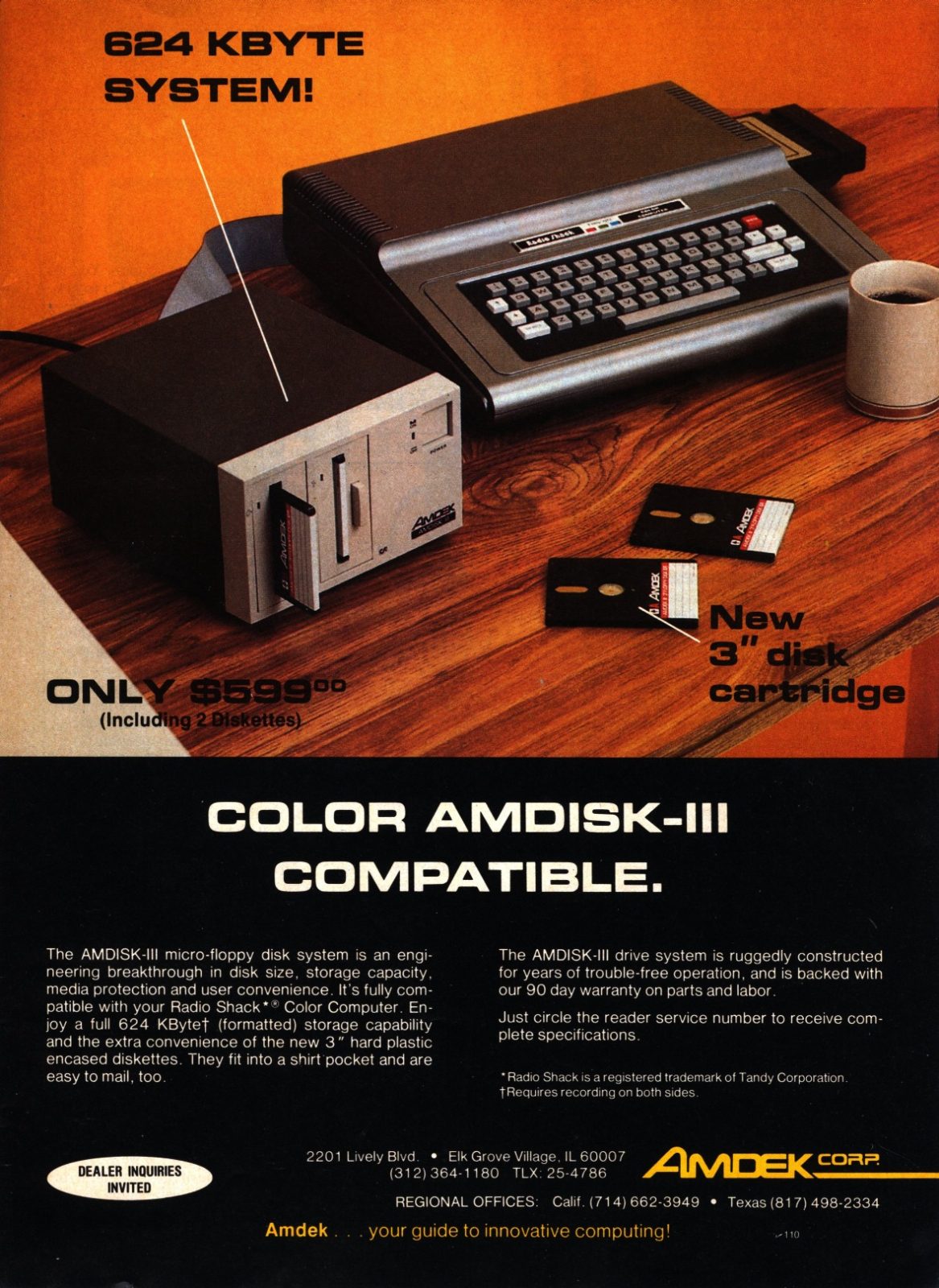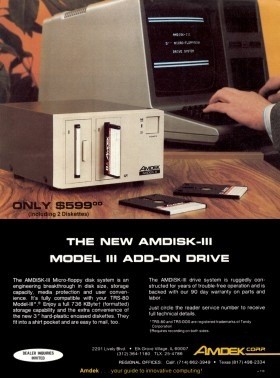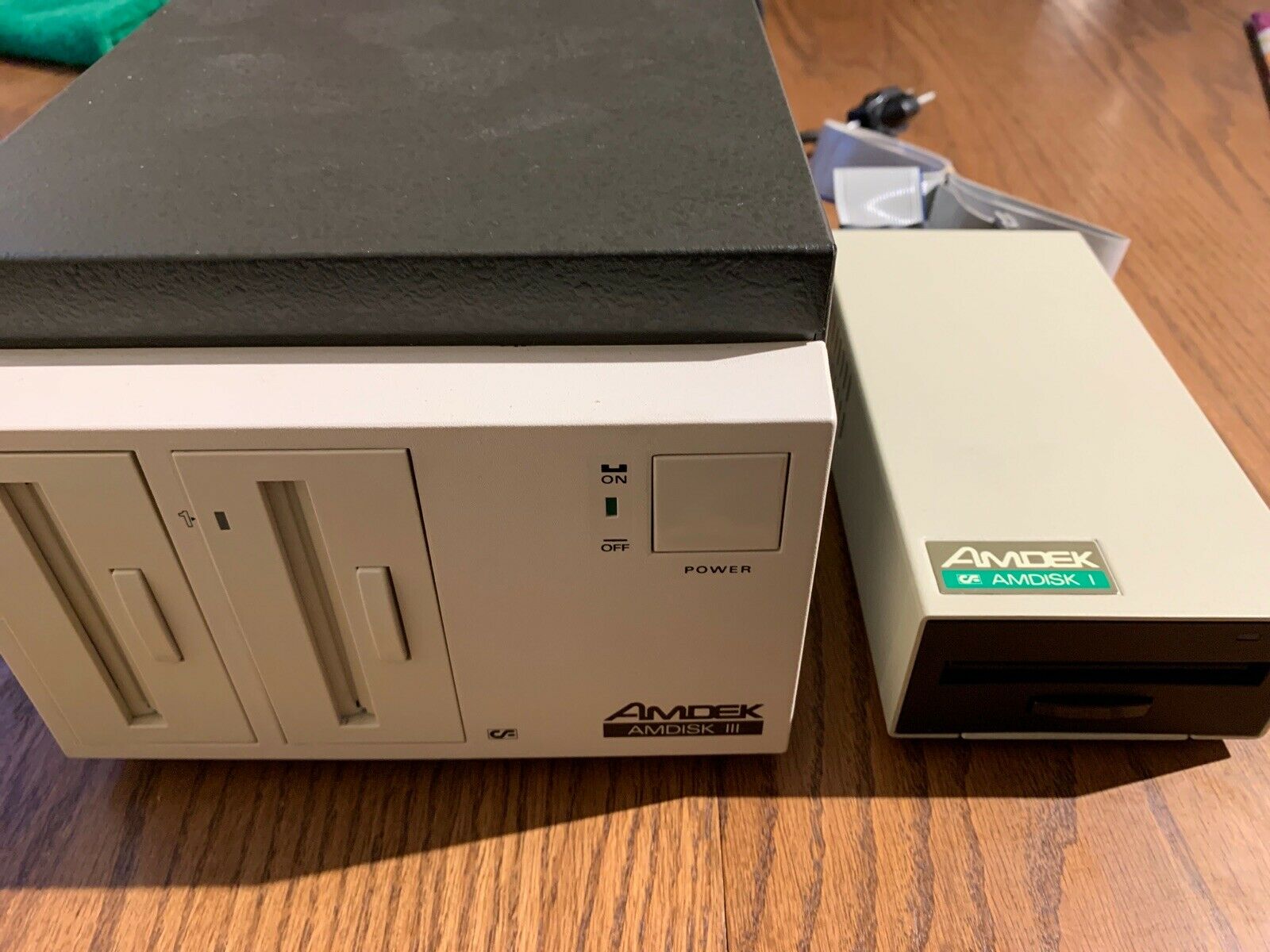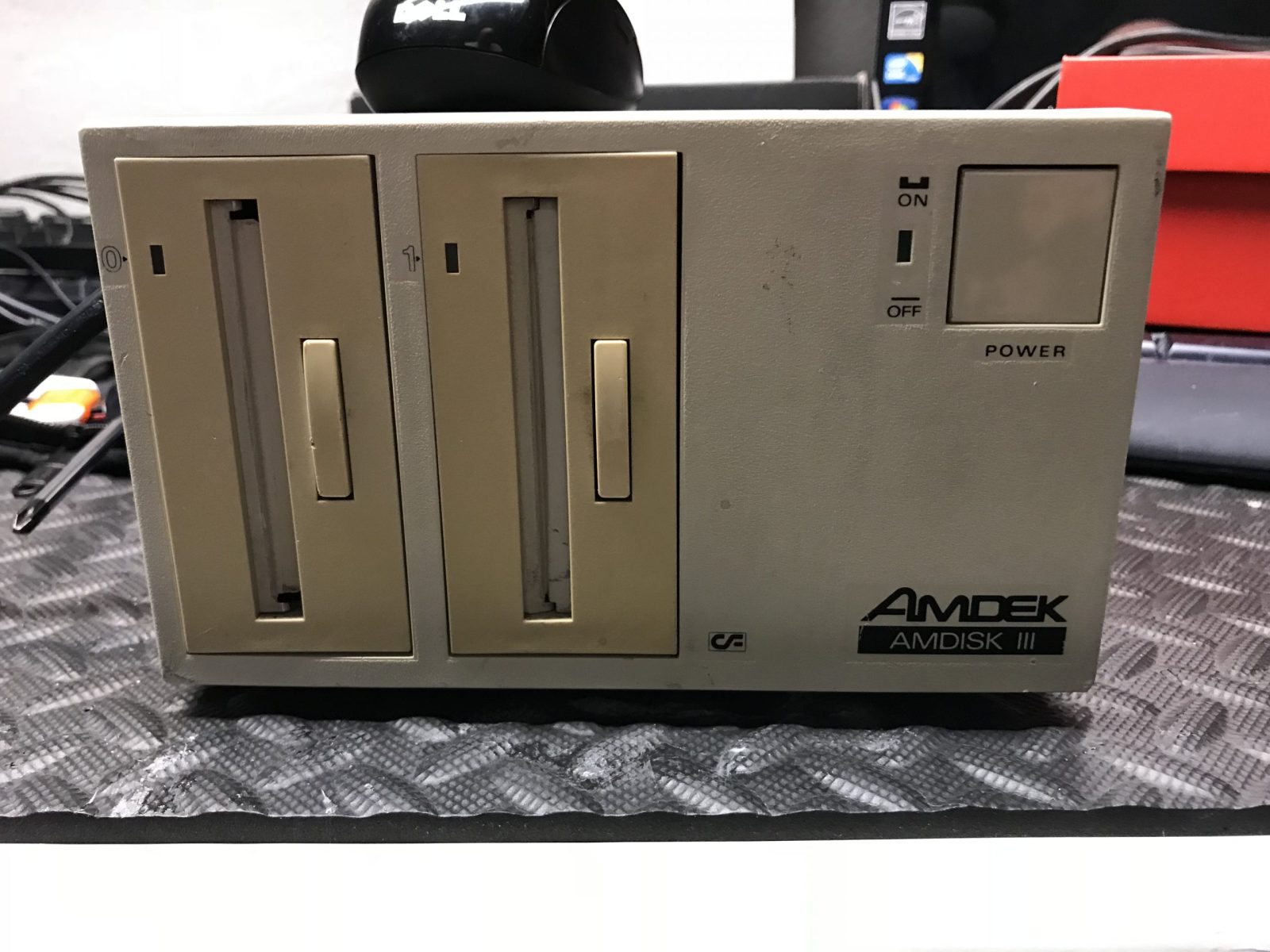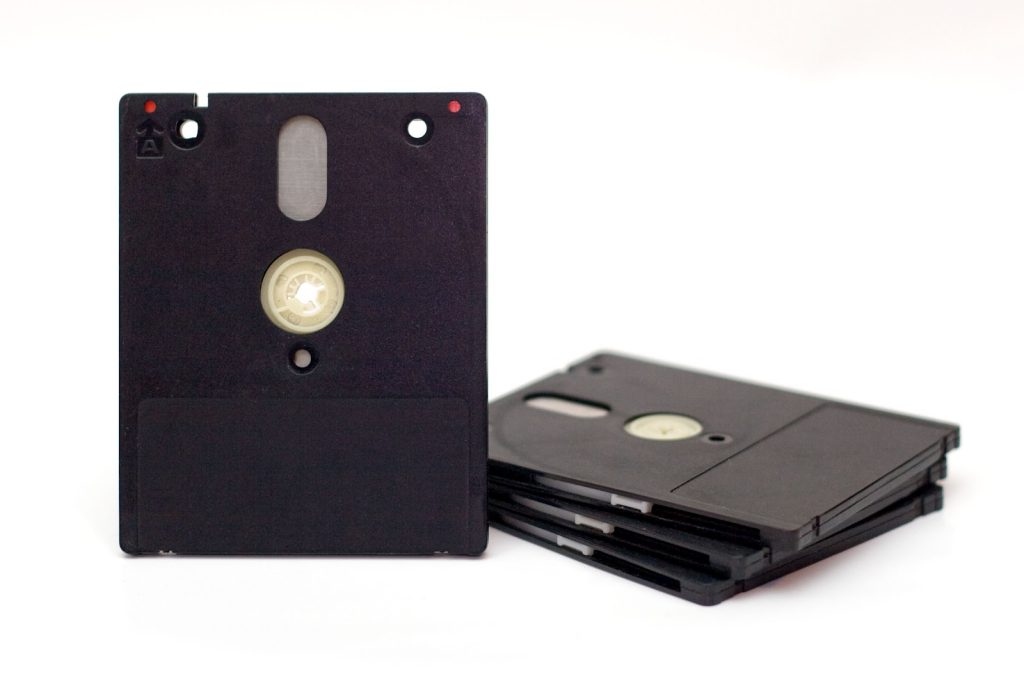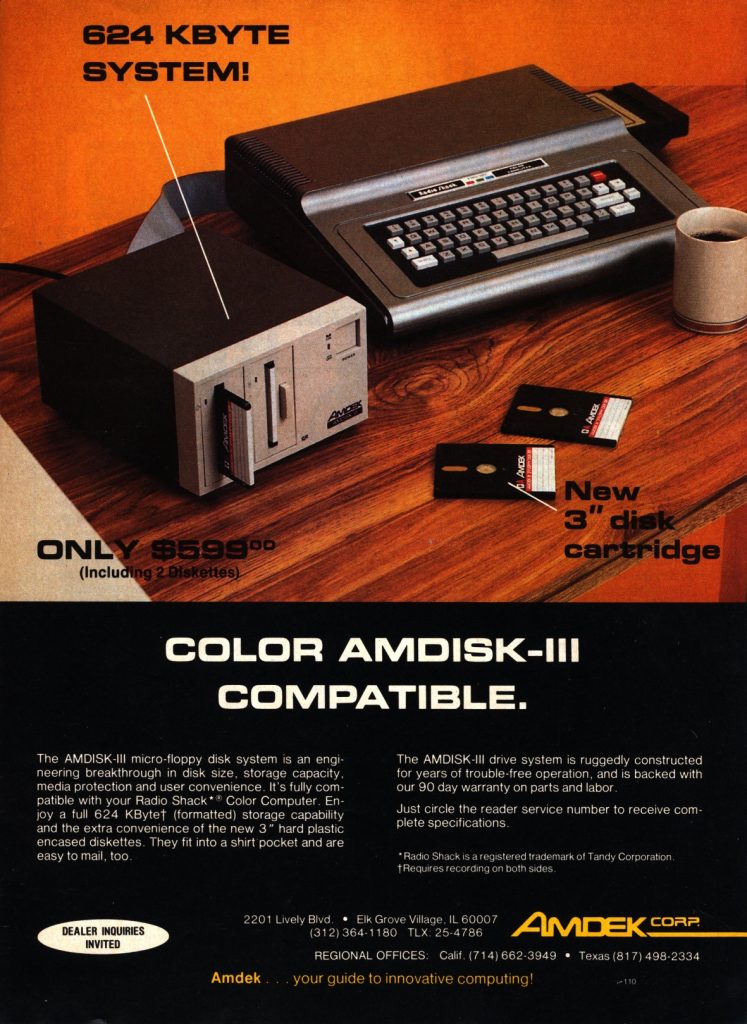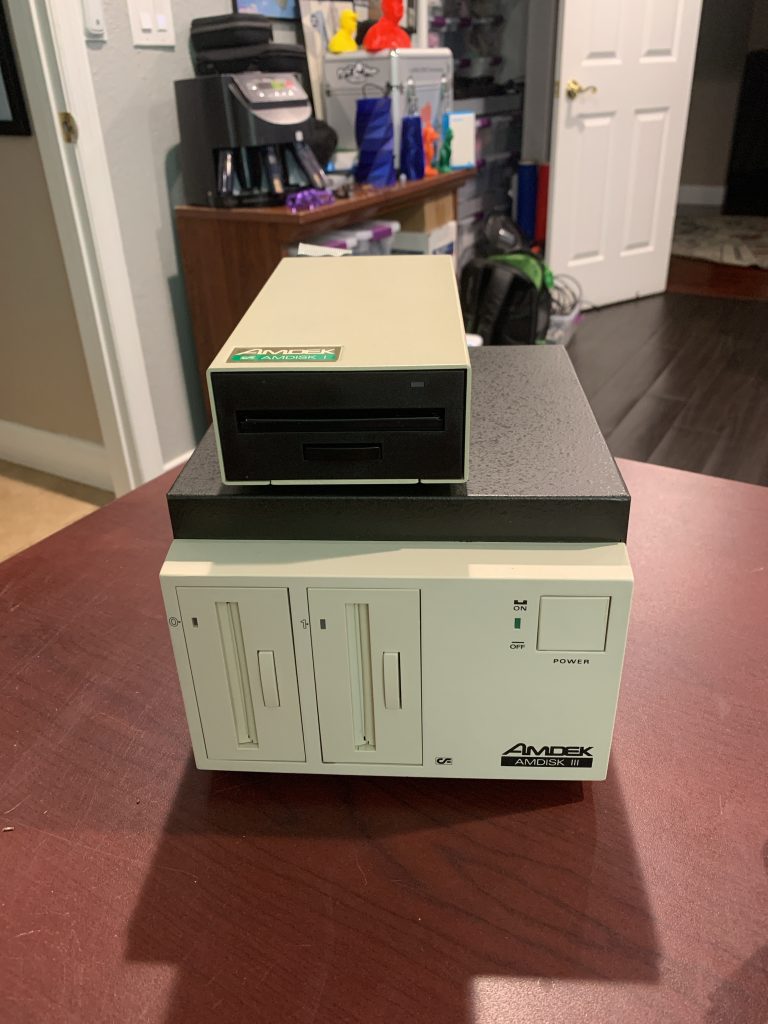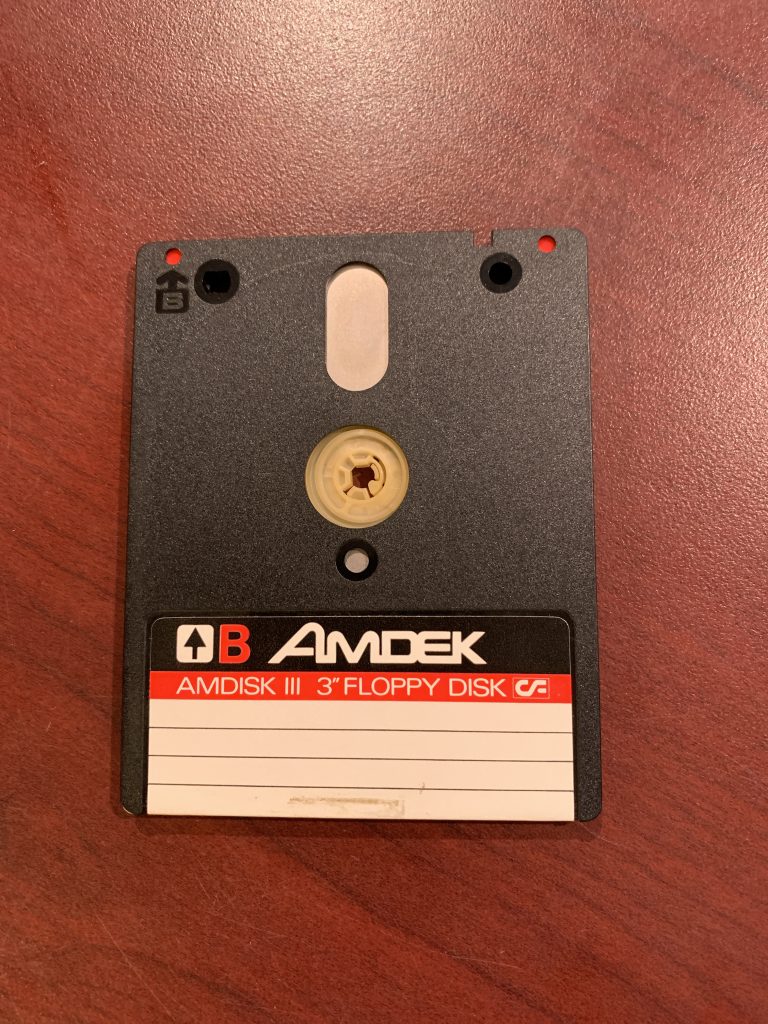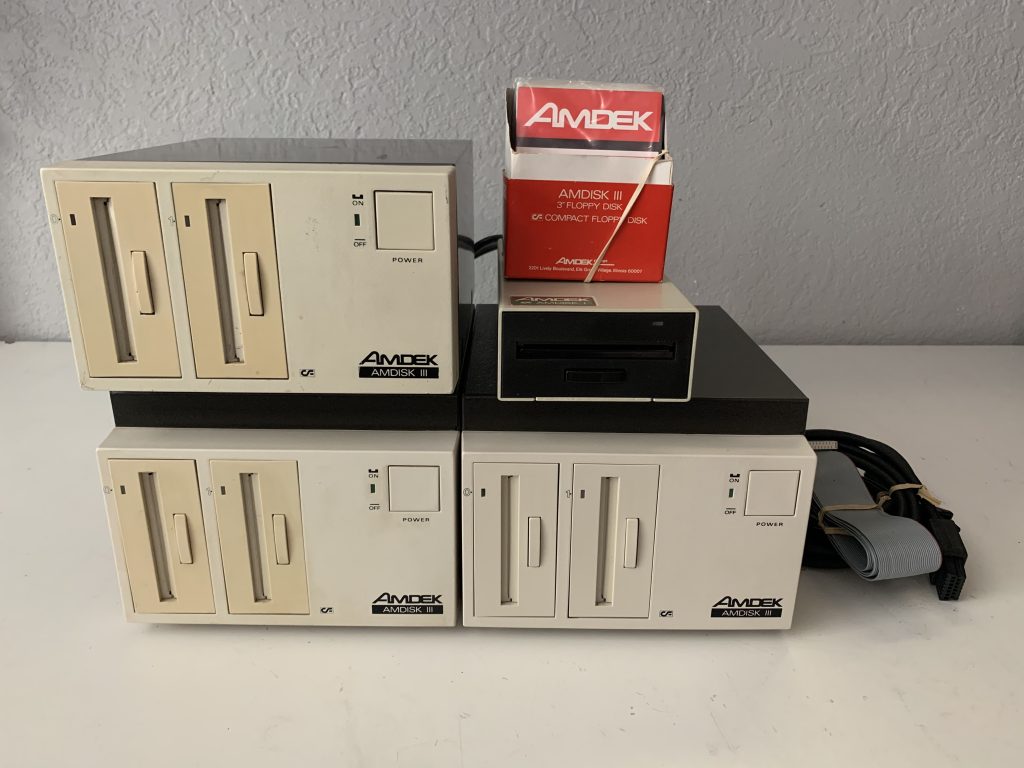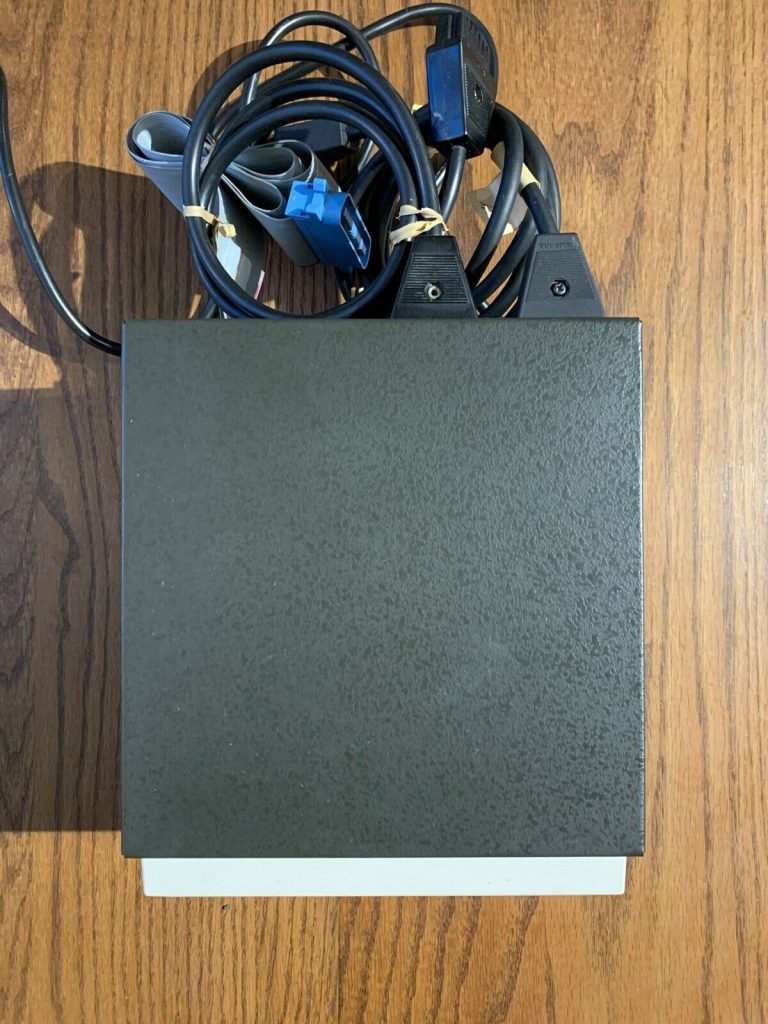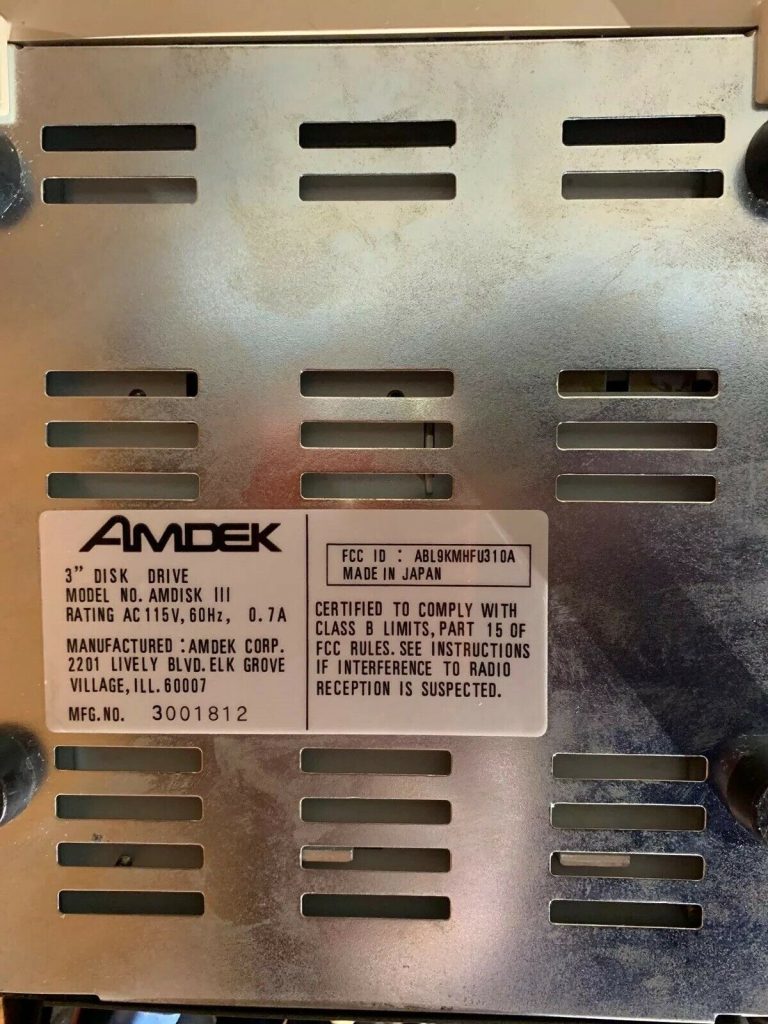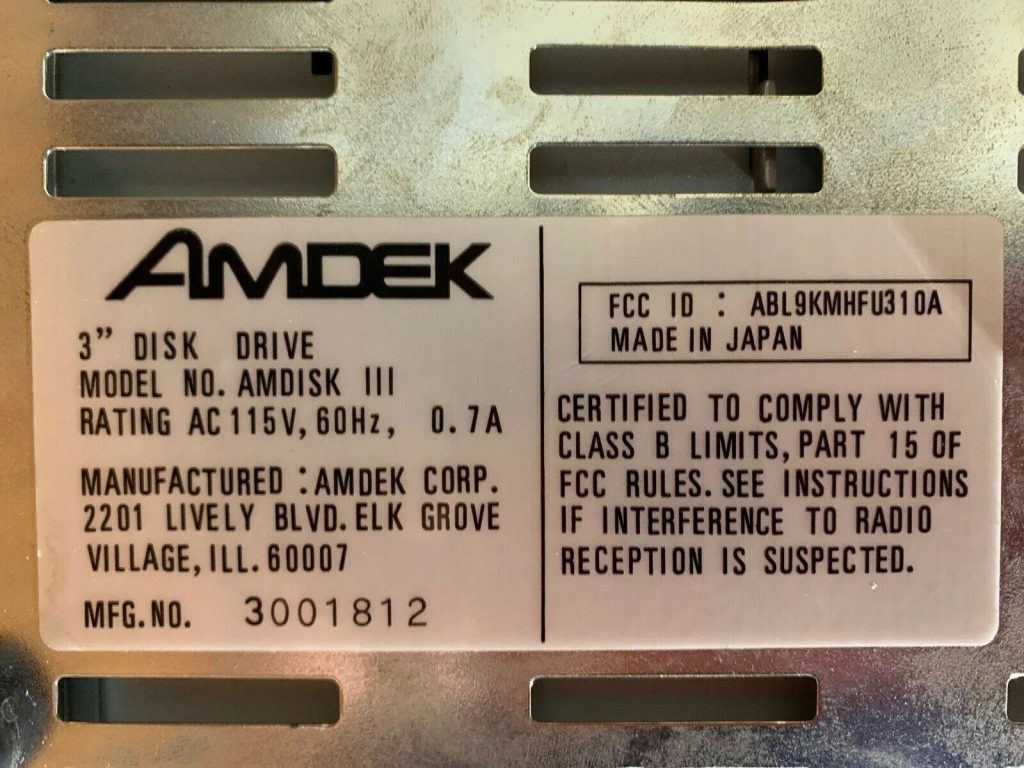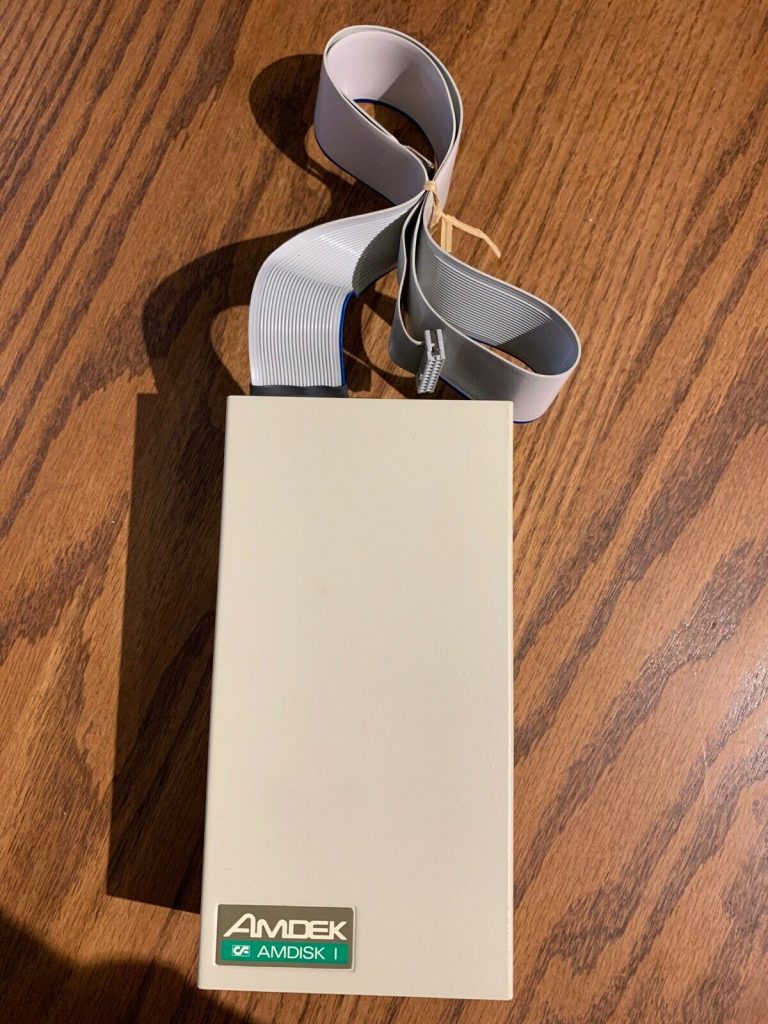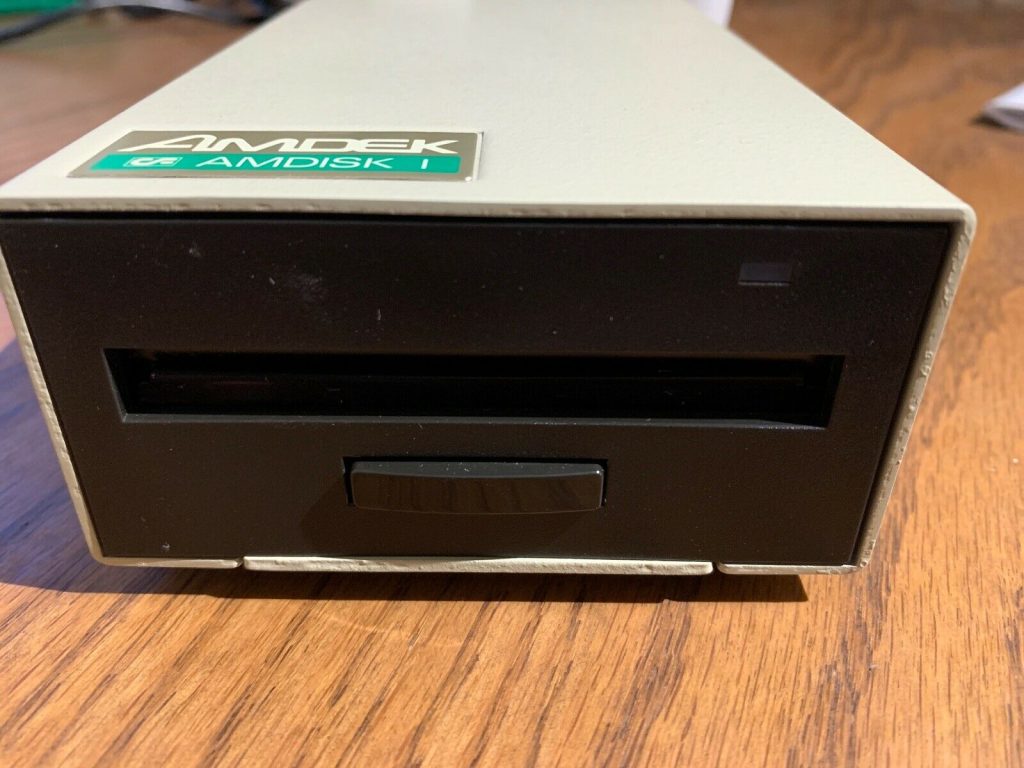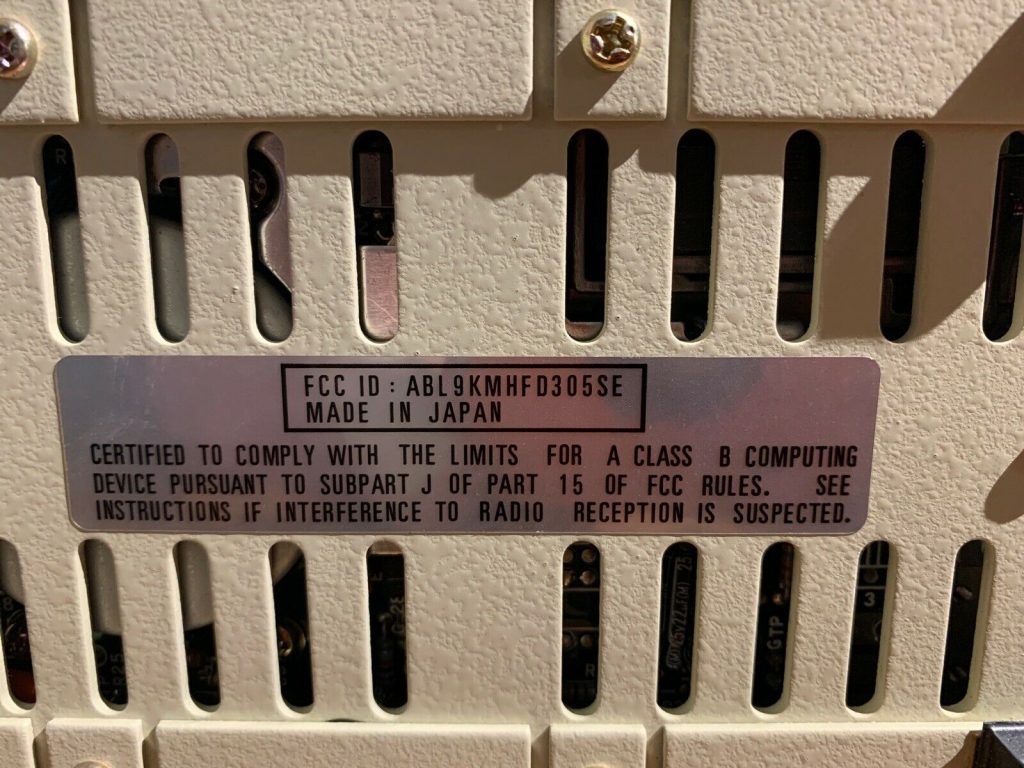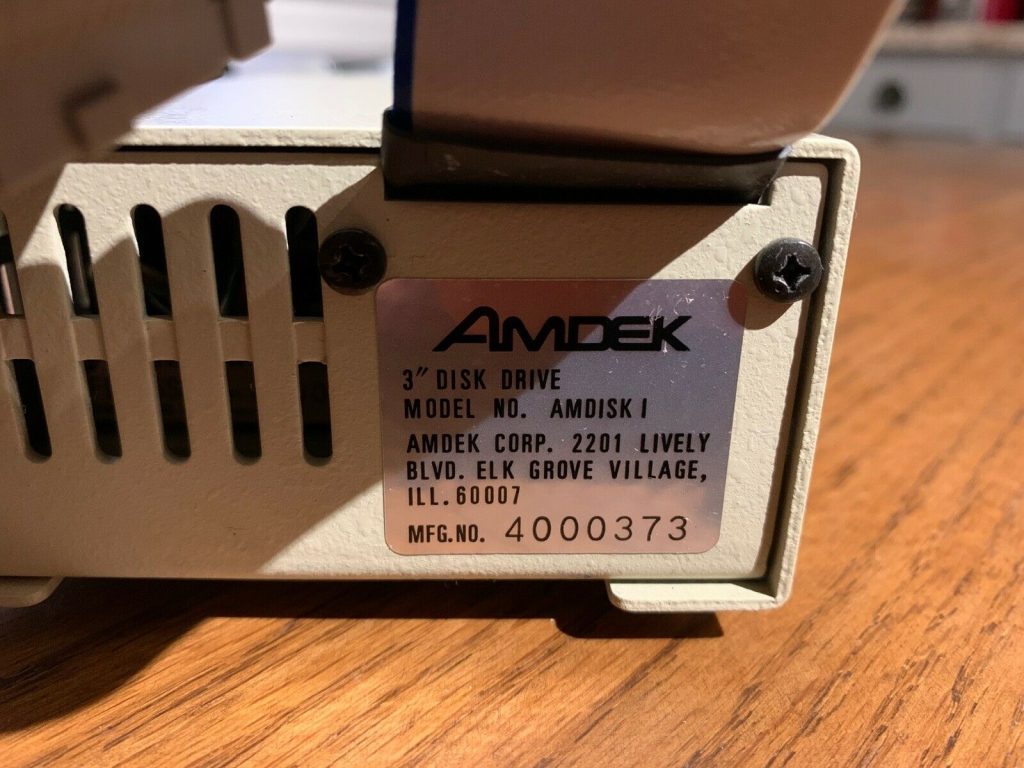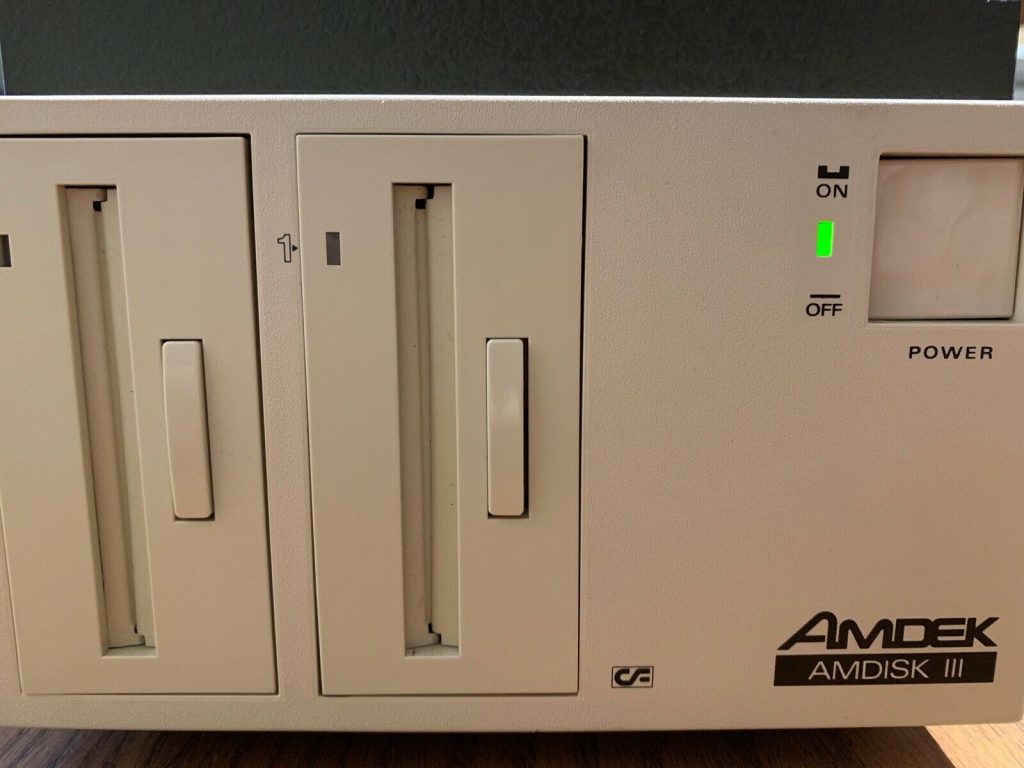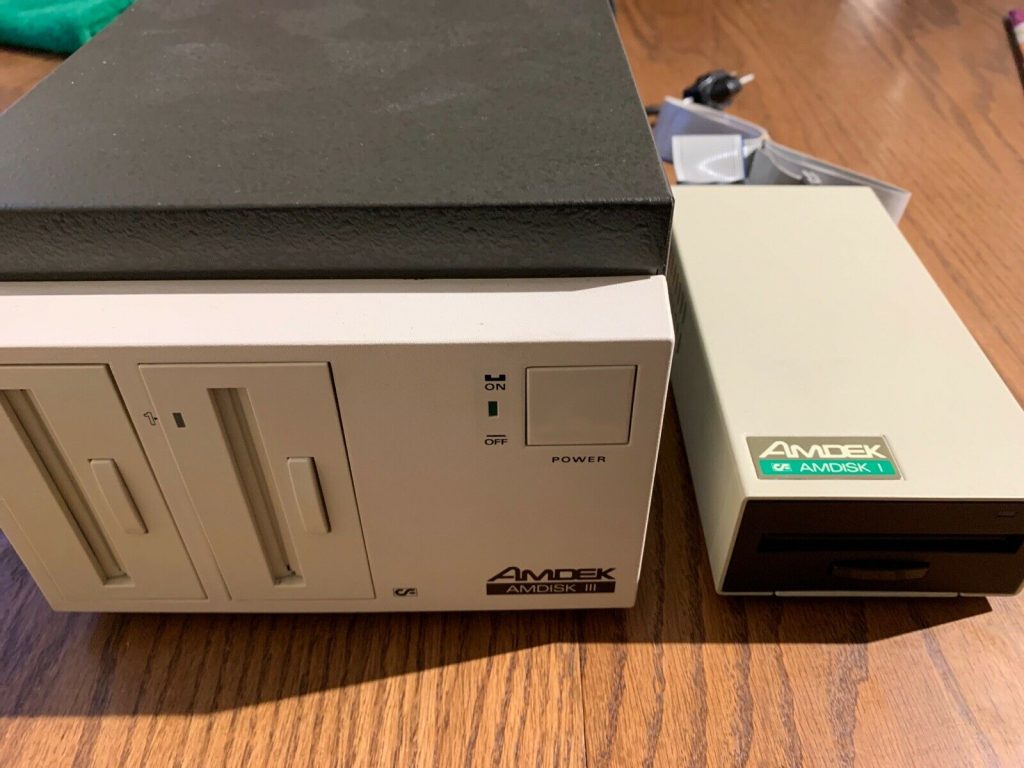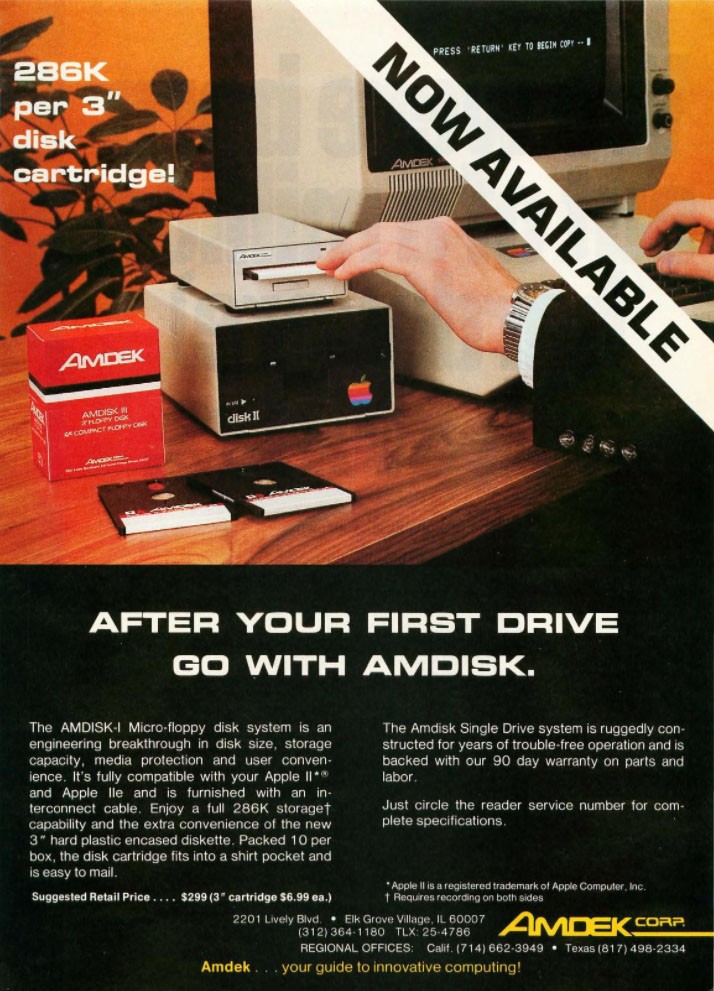AMDC 3-Inch Disk Drives For Atari Richard DeVore The AMDC-1 is a single-drive, single-sided, dual-density 3-inch disk drive with a parallel printer port. The AMDC-2 is the dual drive version. AMDC-2 lists for $850. However, AMDEK has announced special introductory pricing. Through June 30, 1984, the AMDC-1 will sell for $550, and the price of the AMDC-2 will be $760. The AMDC-1 may be upgraded to the AMDC-2 for $300. The Atari 810 single-density single drive lists for the same price as the AMDC-1 but has only half the storage capacity and cannot run a parallel printer.The AMDISK AMDC-1 uses 3-inch disks which are designed to be used on both sides. A nice feature is that the drive has a LED which is keyed to whichever side of the disk is in use. When the A side is in position, the LED is green. When the B side is in position, the LED is red. This eliminates confusion over which side of the disk is in use, and prevents problems such as formatting the wrong side. A simple slide switch on the disk write-protects it, eliminating the need for a supply of write-protect tabs. A Disk In Your Pocket These disks are available from Amdek and Maxell for a suggested retail price of $6.99. Extra protection is offered by the disk enclosure, which seals the disk surfaces completely until the disk is inserted into the drive.The enclosure is made of a hard plastic and has a sliding metal cover over the read/write area of the disk surface. This cover is automatically moved aside when the disk is inserted into the drive. This cover, and their small size, allows them to be carried in a shirt pocket with relative impunity. Their small size also makes it possible to mail them in a standard envelope.The drive formats the 3-inch disks so that they are fully compatible with the 5¼-inch disks you’re used to. This, in effect, makes them transparent to the computer, which accepts them as a 5¼-inch disk.During my tests of the AMDC-2 I used it in both single- and double-density modes with no problems at all. I was able to fill all the disk sectors in both single- and double-density modes, and consistently read all the information. In transferring full disks of programs from one drive to the other, including from 3-inch to 5¼-inch and back, the units performed perfectly. Four Drives And A Printer The drives contain a controller which will take care of four drives and a Centronics-type parallel printer or plotter. It also allows the use of 5¼-inch and the 3-inch drives in any combination. DIP (dual in-line pin) switches mounted on the rear panel of the unit allow the 3-inch drives to be used as any drive, from drive 1 to drive 4. The factory setting is drive 1 for the AMDC-1 and drives 1 and 2 for the AMDC-2.Being able to add noncontroller disk drives to the AMDC is a bonus. Low-cost units are available and may be single- or double-sided. You may also use 40- or 80-track drives. These capabilities allow for a massive amount of storage at reasonable cost. The use of double-sided or 80-track drives requires the DOS/XL operating system to access the additional storage potential.Connecting the external drives requires setting the drive to respond to the proper signal, connecting them to the cable, and plugging the power cord in. External drives must have their own power supplies and cabinets. Switches Select Options There are eight DIP switches located on the upper right-rear panel of the AMDC. These allow the following configurations:Switches 1 through 4 are density selection switches that allow you to configure the drives for either single or double density on boot-up. The density of the boot drive is determined by the disk installed at boot-up. These switches have no effect if the controller is set for DOS 3.0.Switches 5 and 6 determine which drive will be the boot drive. The factory setting is for drive 1, but any drive up to and including 4 may be selected for this function.Switch 7 is used when more than three drives are connected to the controller, and is particularly useful when there is a 5¼-inch drive attached. When this switch is on, the external drive will be recognized as drive 1. When it is off, the 3-inch drives are 1 and 2, and the external drive is drive 3.Switch 8 sets drives that have been selected as dual density to 256 bytes per sector when off. When switch 8 is on, it sets all drives to be Atari 1050 compatible for use with DOS 3.0. When switch 1 is on, disks with 256 bytes per sector will not be recognized.The 3-inch drives are also available as a dual drive without a controller. This version is called the AMDISK IIIB and is fully compatible with the AMDC-1 or 2. The AMDISK IIIB in conjunction with an AMDC-2 lets you have a total of four double-density drives that take up about the same desk space as one Atari disk drive.If you have 5¼-inch dual-density disk drives with controllers that use the industry standard 34-pin ribbon cable for drive connection, you can use the AMDISK IIIB as add-on drives. Parallel Printer Port The printer port on the AMDC is software-compatible with the Atari 850 interface. This enables the use of data base programs, word processors, and LPRINT statements from BASIC. The printer port also uses the same 15 pin D connector as the 850. This port is located on the upper rear panel of the AMDC. Since the pinout is the same as the 850 interface, any Atari-compatible printer cable will work with your printer or plotter.Should you already own an Atari 850 interface, one printer/plotter may be attached to it, and another to the AMDC. Since they both respond to the same signals from the computer, it is possible to have the equivalent of a printer switch by simply turning on the unit you wish to use and turning off the other. Drives Supplied With DOS/XL The AMDC drives will be supplied with the DOS/XL operating system by Optimized Systems Software, Inc., of Cupertino, CA. This is a menu-driven version of OSA + Version 2.0 and OSA + Version 4.1. This allows compatibility with the Atari operating system as well as the use of double-sided or 80-track drives. DOS/XL was not ready at the time of this review, but both OSA + versions performed as advertised.Amdek also will provide a group of utility programs and a patch to Atari DOS which will permit it to function under double density. Most of these utilities are quite complex and are intended for programmers who wish to take full advantage of all the drives’ capabilities.Two of these utilities, however, will be of value to anyone: Config and Version. Config configures the drives as to type and density, and Version tells you the version number and date of the AMDC operating software which may help should you have a problem.The more complex utilities are:FREFORM – This allows you to specify the sector order on the disk. This would be a way to protect programs from being copied.TIME EXTEND – This may be used to change the printer port time-out value from the normal 20 seconds to any value from 1 to 255 seconds. This may be useful when setting up a plotter or if you want to make it 5 seconds to match the normal 850 interface timing.CONTD – Use this program to set the controller and drives to match the diskettes in the drives.IDTABLE – Use this program to change the drive numbers as far as the computer is concerned. You may make drive 2 your boot drive, for instance.IDENT – A program to check how many drives are presently attached and operating in the system.The AMDC-1 and 2 have a formatted capacity of 92K per side in 40-track single-density, and 184K per side in 40-track double-density. In DOS 3 mode they have 127K in double-density. Each of the figures above is doubled since you can use both sides of the disk. If you connect an 80-track, double-density, double-sided drive to the system using DOS/XL, you can get 736K. Software Compatibility At the time this review was written the following software vendors had agreed to make all of their software available on the 3-inch format: LJK, Synapse, Broderbund, Sirius, and Penguin, with more expected, including some educational vendors. This may make it unnecessary to have any other drive to get full use of your computer.The AMDC-2 takes up less space than the 5¼-inch dual drive I have been using, not to mention the fact that the Atari 850 interface was not needed. This space saving also eliminated the additional expense, cables, and power supplies that would have been required with another configuration.This, and the fact that software will be available in the 3-inch disk format, makes the AMDC disk drives an impressive alternative to the standard 5¼-inch drives. The extra protection of the media and ease of use make them especially good in teaching environments. In short, if you are in the market for a disk drive, the AMDC suits your needs perfectly and deserves serious consideration.AMDC Disk Drive AMDEK Corp. 2201 Lively Blvd. Elk Grove, IL 60007 (312) 364-1180 AMDC-1 $599 AMDC-2 $850 |
